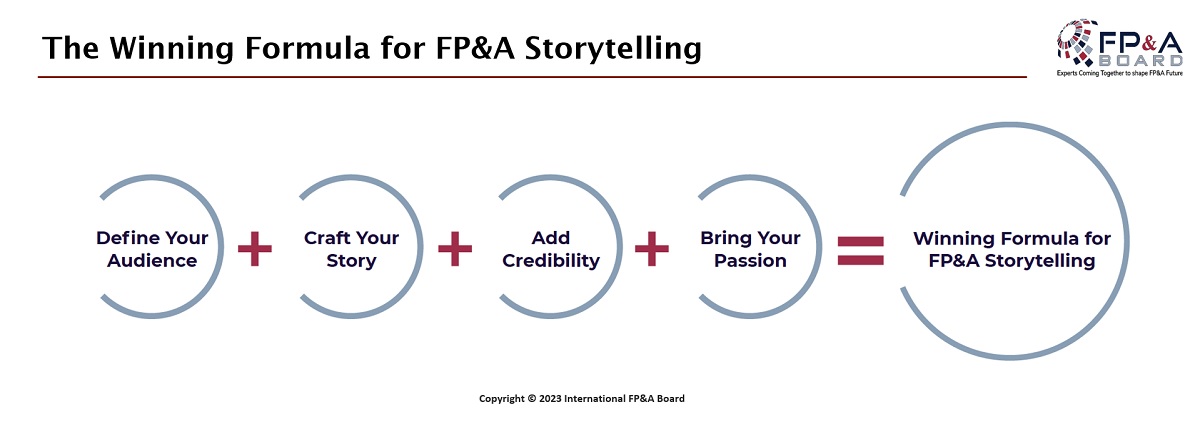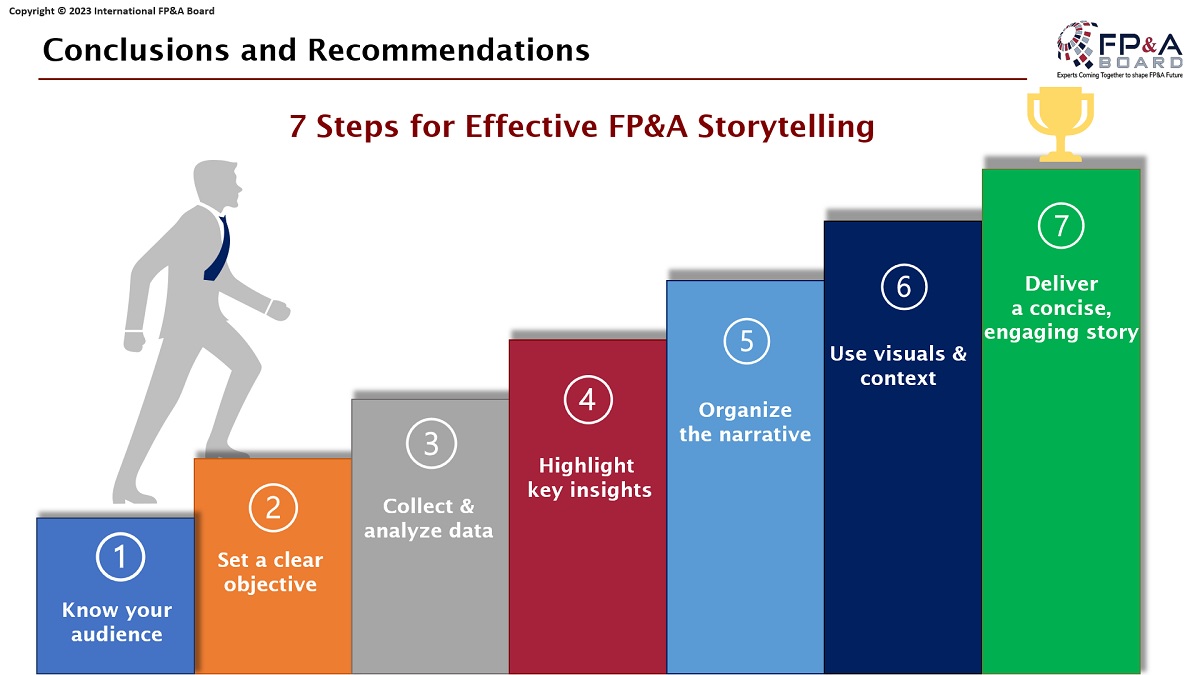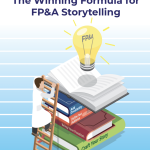On October 17, 2023, the 7th Toronto FP&A Board meeting brought 25 finance professionals from such companies as League, Mondelez, Lightbox, Red Bull, AstraZeneca, AtkinsRealis, Walmart, and many others for a deep dive into the art of FP&A Storytelling in a Data-Driven World. The event was held in a cozy Toronto Spaces Liberty Village. This meeting allowed the group to share insights and best practices, focusing on enhancing their ability to convey financial data in a compelling and actionable manner.
Introduction

Figure 1: Toronto FP&A Board №7, October 2023
The meeting was kicked off with a call to introduce ourselves and answer in one word the question:
"In FP&A storytelling, what's the critical factor for success?"
Aligned with an overall FP&A aspiration to drive value first and foremost, the majority of participants reiterated a few fundamental points:
- Understand your audience to convey the right message and convey the message right: quite a few people at the meeting shared their stories when the presentation was taken negatively since either the format was not appropriate or the audience was not ready.
- Get to the point: always drive action.
- Build collaboration through transparency and cross-functional alignment.
The discussion moved to the most recent developments in how we work, and the FP&A Board discussed the impact of Artificial Intelligence/Machine Learning on different areas of the FP&A function. Toronto FP&A Board highlighted that applying AI/ML technology can help us advance the profession. However, large language models are not seen as a threat, especially in storytelling.

Figure 2
Larysa Melnychuk presented the Winning Formula for FP&A Storytelling, and it sparked a dynamic discussion among the Board members, who shared their own insights on the topic. Overall, the key elements deemed vital in the storytelling process included conveying a sense of passion and flexibility. The participants believed that these attributes are essential to infuse life into the narrative, making it more engaging and relatable to the audience. The FP&A Board also discussed the significance of materiality, making it clear that the story should revolve around what truly matters in the financial landscape.

Figure 3: Shadib Bin Newaz shares his experience at Toronto FP&A Board №7, October 2023
Shadib Bin Newaz, Director of FP&A at League, shared his case study, which provided valuable insight into how FP&A storytelling changed a course of action for the company.
Group Work During the Event
The FP&A Board members were split into groups to discuss best practices to tackle three essential blocks of FP&A storytelling: narrative, visuals, and data.
Narrative: How can we create a clear, engaging narrative tailored to our audience?
While the group discussed several approaches, prevalent ideas circled around developing and applying an easy-to-follow structure to convey the message.
For example, the reflective model coined by Terry Borton in the '70s, applied to the FP&A context, could break the narrative into three blocks:
- Identify the problem that needs to be addressed (answer the question "What?"),
- Define KPIs (answer the question "So What?"),
- Develop options and provide recommendations (answer the question "Now What?").
Developing a structure applicable to the specific context and applying it to craft the narrative simplifies the task and helps keep the main topic in the audience's focus.

Figure 4: Group Work, Toronto FP&A Board №7, October 2023
Visuals: How can we design impactful, comprehensible visuals for our story?
The second group agreed that visuals are essential to convey and reinforce the message. However, in the Extended Planning and Analysis (xP&A) context, we need to carefully select the format of the visuals and think about whether something should be added to them. While some stakeholders may prefer to have information summarized in a chart, other users' top choice is the table format.
Sharing experience and common trends, the second group provided the following recommendations:
- To create impactful and easily understandable visuals, keep your charts clean and focused,
- For recurring information, standardize visuals to save you and your audience's time,
- Use the right tool for the job. While a spreadsheet might be the most efficient tool for ad-hoc analysis with quick graphs to discover the best format to present information, self-serve dashboards connected to a data warehouse might better fit for recurring visuals collecting and presenting data from larger data sets.

Figure 5: Group Work, Toronto FP&A Board №7, October 2023
- Data: How can we effectively identify and analyze relevant data for our narrative?
A heated discussion took place within the third group, where participants were divided on two sides of the fence regarding the question of what comes first: data or narrative. Shall we, as trusted Business Partners, develop a narrative first and then look for data confirming it, or shall we analyze data to develop a narrative? What everyone agreed on is that no solution fits all. Some types of data analysis require us to roll our sleeves and look for patterns, inspect anomalies, and identify correlations. On the other side of the spectrum, when data is unreliable, insufficient, or missing, as it frequently happens in a forward-looking context, it is important to stay open-minded and apply problem-solving skills to confirm our assumptions in an alternative way.
Conclusion

Figure 7
Toronto FP&A Board underscored the critical role of storytelling in the realm of Financial Planning and Analysis. Furthermore, effective storytelling is about more than just numbers; it's about making data come to life, engaging the audience, and driving actions and decisions. Storytelling in the world of FP&A is a powerful tool to align teams, build trust, and guide organizations toward the right decisions in business.
Our Sponsor and Partners
We would like to thank Board International for sponsoring this event. IWG and Robert Walters, thank you for your tremendous help with the event organization.








